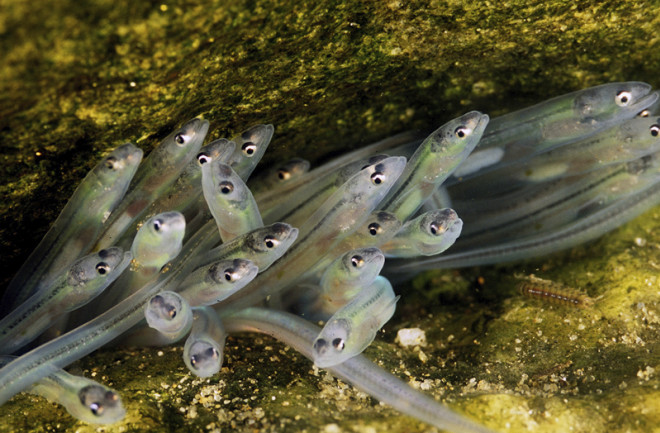Johannes Schmidt spent 25 years chasing an enigmatic fish across the Atlantic Ocean. The Danish biologist surrendered the hunt only after his ship was torn to pieces on a Caribbean coral reef. Schmidt was trying to solve an ancient mystery about one of nature’s strangest fish: eels. Aristotle suggested the slithering species emerged spontaneously from the earth. But by the early 1900s, Schmidt and others suspected eels bred in the open ocean, instead of their lifelong freshwater homes.
Schmidt’s early sea expeditions stayed close to shore, casting nets off European coastlines. Then, in 1904, he caught a young eel south of Iceland, implying the fish were indeed spawning at sea. So Schmidt journeyed farther into the open ocean. The tinier the eels he found, the closer he figured he was to their spawning grounds.
Eventually, he sailed from northern Europe toward the Caribbean, ultimately catching dime-sized eels near the Sargasso Sea. It’s an enormous patch of seaweed in the southwest Atlantic Ocean. He guessed this calm stretch of ocean was the eel asylum — the place where European and American eels are born, spawn and die.
It’s been nearly a century since Schmidt’s hypothesis, but eels still haven’t surrendered their secrets. We now know that American eels inhabit streams, lakes and rivers from Venezuela to Greenland, and the similar (yet genetically distinct) European eels live anywhere from Norway to North Africa. But scientists still haven’t seen these eels spawning. So, that eel you ate on your sushi roll? No one knows for certain where it was born.

